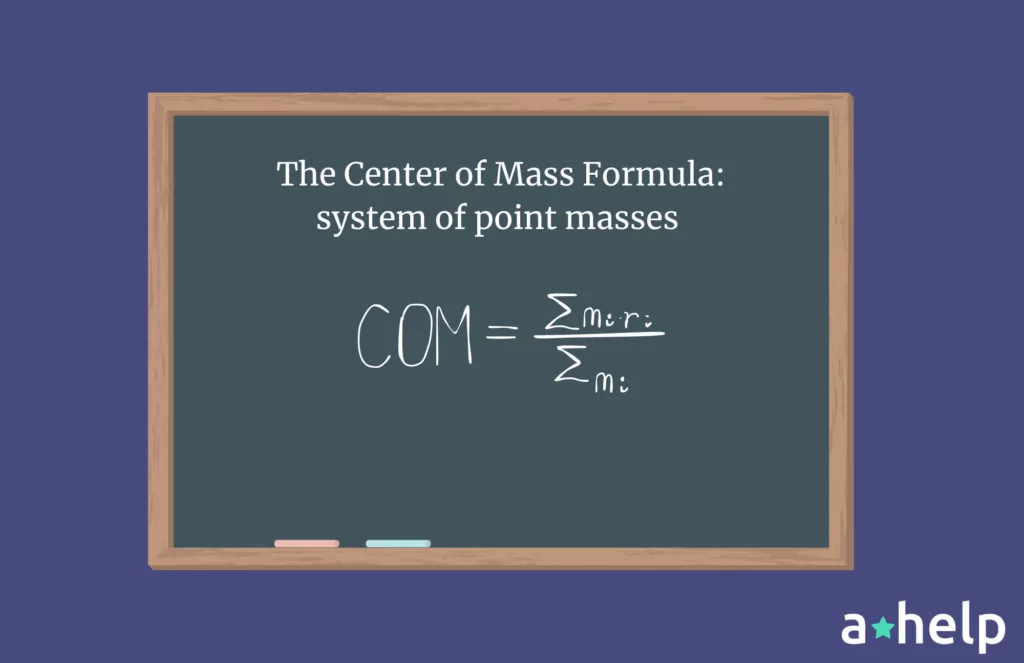The concept of the center of mass (COM) is a foundational principle in physics and engineering. It is the point in a system or an object where the distribution of mass is equal in all directions. This position is crucial when analyzing the motion, stability, and gravitational interactions of an object.

✅ AI Essay Writer ✅ AI Detector ✅ Plagchecker ✅ Paraphraser
✅ Summarizer ✅ Citation Generator
Defining Center of Mass
In physics, the center of mass of an object or system is a point that represents the average position of all the parts of the system, weighted according to their masses. For simple geometric objects with uniform density, the center of mass is the same as the geometric center. However, for irregular objects or systems of multiple objects, the center of mass location may not be intuitively obvious and requires calculation.
The Importance of COM in Physics
The center of mass plays a pivotal role in various physical phenomena:
- Stability: The lower the center of mass, the more stable an object is. This is important in understanding why and how objects topple.
- Motion: In a gravitational field, all parts of an object are pulled towards the center of the earth, but the motion of the object can be predicted by considering a force applied at the COM.
- Rotation: Objects rotate about their center of mass. When calculating rotational dynamics, the point mass assumption simplifies an object to its center of mass.
The Center of Mass Formula
The formula for finding the center of mass for a system of point masses is given by:

where mi represents each mass in the system, and ri represents the position vector of each mass with respect to a chosen reference frame.
Application in Coordinate Systems
In a coordinate reference system, you can find the center of mass by calculating its coordinates (x, y, z) using the formula:

Here, xi, yi, and zi are the coordinates of each mass, and M is the total mass of the system.
Center of Mass in Various Contexts
In Mechanics
The center of mass is often used interchangeably with the center of gravity in a uniform gravitational field. This is the point where the force of gravity can be considered to act. In engineering mechanics, understanding the center of gravity is essential for designing stable structures and vehicles, as it relates to their topple limit. For example, knowing the center of mass location is critical in preventing trucks from toppling over when taking sharp turns.
In Elastic Collisions
During an elastic collision, the velocities of the colliding objects can be analyzed using the center of mass frame (COM frame). This frame of reference simplifies the calculation since the total momentum in the COM frame is zero, making the analysis of the collision more straightforward.
Irregular Objects
For irregular objects, the center of mass may not correspond with any actual material point within the object. For instance, the centroid of a donut-shaped object lies in its central void. Here, the plumb line method can be applied to experimentally determine the center of mass by suspending the object from different points until a common intersect is found.
Practical Considerations
Moving Frames
In a moving reference frame, the center of mass of a system can provide insights into its dynamics. In the case of a high-speed vehicle, for example, understanding the motion in the COM frame can help optimize stability and control.
Laboratory Analysis
In a laboratory setting, the center of mass is an essential concept for experiments involving balance and the analysis of forces. It helps in setting up the coordinate reference systems and ensuring the accuracy of measurements.
Conclusion
The center of mass formula is a powerful tool in physics and engineering. Whether dealing with the stability of structures, the dynamics of motion, or the precision of laboratory experiments, the ability to calculate the COM provides essential insights into the behavior of physical systems. By applying this fundamental principle, we can predict how an object will react under various forces and motions, making it a cornerstone of scientific and engineering analysis.
FAQ
Follow us on Reddit for more insights and updates.





Comments (0)
Welcome to A*Help comments!
We’re all about debate and discussion at A*Help.
We value the diverse opinions of users, so you may find points of view that you don’t agree with. And that’s cool. However, there are certain things we’re not OK with: attempts to manipulate our data in any way, for example, or the posting of discriminative, offensive, hateful, or disparaging material.